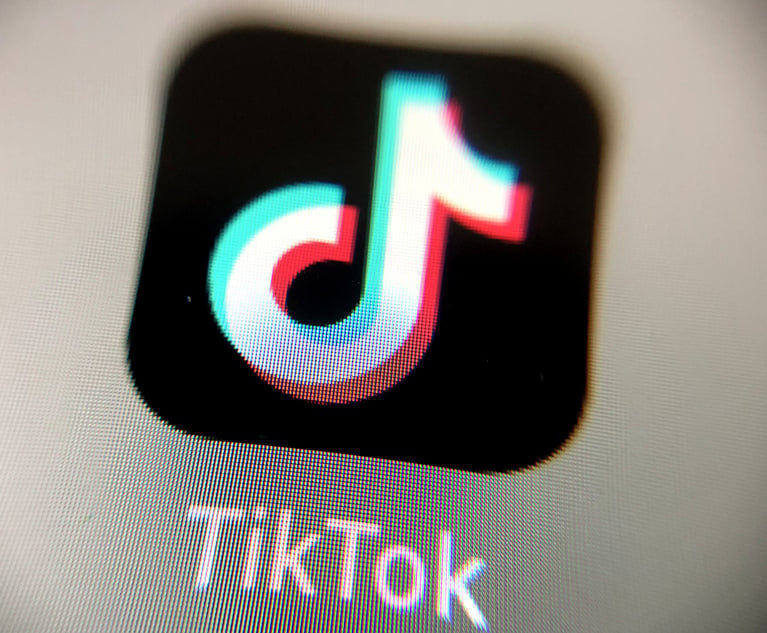Hourly Rate Gap Widens as Top Billers at Biggest Firms Leave Others Behind
It's easy to be impressed by individual partner rates approaching $2,000 an hour, but the widening gap between whole categories of law firms may mean more for the industry's future.
May 17, 2018 at 05:51 PM
4 minute read
 Image: Shutterstock
Image: Shutterstock
With outsized billing rates making even mainstream news reports—a Kirkland & Ellis partner's $1,745 hourly rate in the Toys R Us bankruptcy recently caught the attention of The New York Times—there's no question clients are watching the numbers closely.
But are they balking? It depends who you ask.
The vast range of pricing markets in the legal business means some Big Law partners have long operated on a different playing field from their counterparts elsewhere when it comes to billing rates.
As stratification between the very top firms and the rest of the Am Law 100 and NLJ 500 grows ever more pronounced, that billing chasm is only growing wider.
Jim Cotterman, principal at Altman Weil, noted that only a handful of firms truly compete for the work at the top of the rate spectrum.
“It is important to note that the very top-end dynamics appear very different from those firms just outside of there, and for much of the rest of the profession,” Cotterman said in an email. “The top-end firms appear to be able to raise rates at a level greater than inflation, sustain those increases all the way to collections and without diminishing demand.”
And, Cotterman noted, other firms aren't realizing significantly greater gains even when they are raising their published rates. “Much of the rest of the market must be much more restrained increasing rates, may give much of the increase back in discounts, billing adjustments and receivable adjustments, and may experience a decrease in demand as a result,” he said.
Uniform rate increases may not be quite as common as they once were. Lisa Smith, head of Fairfax Associates' Washington, D.C., office, said she has witnessed firms looking at rate increases more selectively; person by person and practice by practice. Smith said she has noticed less of a focus on increasing all partners of the same seniority level at a certain rate.
At smaller and midsize firms, the top-end rates hit a ceiling that appears to be spread out across a fairly narrow group atop the firm's partnership, Smith said. Bigger firms, she added, were much more likely to push the most senior or most valuable partners' rates up.
“The interesting thing we see at smaller and midsize firms is rate compression,” Smith said.
The growing divide between the top 50 firms and the rest of the pack is partially attributable to the brand dominance of leading firms, said Jeff Grossman, managing director of Wells Fargo Specialty Group in North Carolina. Grossman said strong practice areas, particularly in transactional matters and M&A, alongside prudent fiscal management at premier Big Law firms, has increased the gap.
The gap between the largest Big Law firms and all others appears evident in new data collected by ALM Intelligence, which culled billing rate information from bankruptcy filings and other sources. For example, the data show an average partner billing rate at Jones Day of $950, while the average partner billing rate across all firms included in the data was $804.87. ALM analyzed partner billing rates data from 53 individual firms.
Other surveys found starker differences. Partner hourly rates at the largest 50 firms—having more than 750 lawyers—recorded billable rates that are 40 percent greater than firms with 501 to 750 lawyers, according to an 2017 analysis from CounselLink, a LexisNexis subsidiary. CounselLink's data found the gap grew 10 percent over the previous year.
Jeffrey Lowe, managing partner of Major, Lindsey & Africa's D.C. office, said the strong economy in 2017 “absolutely” emboldened firms to raise billing rates, but the rate of billing growth isn't quite back to its pre-recession levels.
Lowe said the recession shifted how clients view their role in determining rates, and many clients have become more sensitive. A vast majority of cases involve a discussion of what the rates are going to be, Lowe said, leading to firms deciding to set artificially high rack rates.
Read more:
Sorry Clients: Higher Law Firm Billing Rates Really Do Pay Off
This content has been archived. It is available through our partners, LexisNexis® and Bloomberg Law.
To view this content, please continue to their sites.
Not a Lexis Subscriber?
Subscribe Now
Not a Bloomberg Law Subscriber?
Subscribe Now
NOT FOR REPRINT
© 2025 ALM Global, LLC, All Rights Reserved. Request academic re-use from www.copyright.com. All other uses, submit a request to [email protected]. For more information visit Asset & Logo Licensing.
You Might Like
View All
'A Death Sentence for TikTok'?: Litigators and Experts Weigh Impact of Potential Ban on Creators and Data Privacy

Shareholder Democracy? The Chatter Musk’s Tesla Pay Case Is Spurring Between Lawyers and Clients
6 minute read

Many LA County Law Firms Remain Open, Mobilize to Support Affected Employees Amid Historic Firestorm
Trending Stories
Who Got The Work
J. Brugh Lower of Gibbons has entered an appearance for industrial equipment supplier Devco Corporation in a pending trademark infringement lawsuit. The suit, accusing the defendant of selling knock-off Graco products, was filed Dec. 18 in New Jersey District Court by Rivkin Radler on behalf of Graco Inc. and Graco Minnesota. The case, assigned to U.S. District Judge Zahid N. Quraishi, is 3:24-cv-11294, Graco Inc. et al v. Devco Corporation.
Who Got The Work
Rebecca Maller-Stein and Kent A. Yalowitz of Arnold & Porter Kaye Scholer have entered their appearances for Hanaco Venture Capital and its executives, Lior Prosor and David Frankel, in a pending securities lawsuit. The action, filed on Dec. 24 in New York Southern District Court by Zell, Aron & Co. on behalf of Goldeneye Advisors, accuses the defendants of negligently and fraudulently managing the plaintiff's $1 million investment. The case, assigned to U.S. District Judge Vernon S. Broderick, is 1:24-cv-09918, Goldeneye Advisors, LLC v. Hanaco Venture Capital, Ltd. et al.
Who Got The Work
Attorneys from A&O Shearman has stepped in as defense counsel for Toronto-Dominion Bank and other defendants in a pending securities class action. The suit, filed Dec. 11 in New York Southern District Court by Bleichmar Fonti & Auld, accuses the defendants of concealing the bank's 'pervasive' deficiencies in regards to its compliance with the Bank Secrecy Act and the quality of its anti-money laundering controls. The case, assigned to U.S. District Judge Arun Subramanian, is 1:24-cv-09445, Gonzalez v. The Toronto-Dominion Bank et al.
Who Got The Work
Crown Castle International, a Pennsylvania company providing shared communications infrastructure, has turned to Luke D. Wolf of Gordon Rees Scully Mansukhani to fend off a pending breach-of-contract lawsuit. The court action, filed Nov. 25 in Michigan Eastern District Court by Hooper Hathaway PC on behalf of The Town Residences LLC, accuses Crown Castle of failing to transfer approximately $30,000 in utility payments from T-Mobile in breach of a roof-top lease and assignment agreement. The case, assigned to U.S. District Judge Susan K. Declercq, is 2:24-cv-13131, The Town Residences LLC v. T-Mobile US, Inc. et al.
Who Got The Work
Wilfred P. Coronato and Daniel M. Schwartz of McCarter & English have stepped in as defense counsel to Electrolux Home Products Inc. in a pending product liability lawsuit. The court action, filed Nov. 26 in New York Eastern District Court by Poulos Lopiccolo PC and Nagel Rice LLP on behalf of David Stern, alleges that the defendant's refrigerators’ drawers and shelving repeatedly break and fall apart within months after purchase. The case, assigned to U.S. District Judge Joan M. Azrack, is 2:24-cv-08204, Stern v. Electrolux Home Products, Inc.
Featured Firms
Law Offices of Gary Martin Hays & Associates, P.C.
(470) 294-1674
Law Offices of Mark E. Salomone
(857) 444-6468
Smith & Hassler
(713) 739-1250






